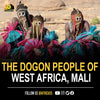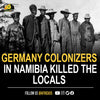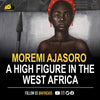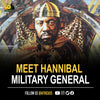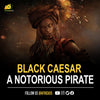
Godfrey Nsereko uses graphics to share content of trending political issues on his social media platforms.A proprietor of an arts group, Theatre Focus Uganda, Nsereko poses for a photo while reading a book and he customises his desired content on the book cover in form of a book title related to existing trends.Nsereko’s content is then shared by thousands of social media users with differing interpretations and others making fun out of it.He believes that there is need for Ugandans to follow political conversations but they are silenced with fear of those who should share their views and self-censored media outlets.
He adds that all he does is to use art to keep people informed at a time when the civic space continues to shrink.“Instead of starting a conversation about stolen public funds at a local function, I use art to tell it all. The beauty about art is that the people receive it easily and interpret it the way they want, instead of risking abduction by those in power,” he adds.Nsereko says his motive is to share content and let the people interpret it but not to pave way for an anti- government narrative.“Like any other person, I have a right to an opinion on issues that happen in our country but I am not sure how my verbal response will be taken by those in power.
In an unpredictable situation, I opt for art as a disruptive form to share my views on existing political and social realities,” Nsereko notes.In a similar manner, Bruce Nahabwe, an artist who has crafted a number of political themed works, says Ugandans have used different ways to share their political views, but through art, communication becomes more expressive and easy to understand.The brain behind Bobi Wine campaign trail and police brutality artworks, Nahabwe notes that people can easily relate with art in the age of misinformation.“When I did an art piece dubbed Campaign Trail with Bobi Wine, I thought it would be received like random art but I saw several people on social media captioning it with stories of brutality and the unequivocal attacks and violence against his supporters.
Art carries stories for people to interpret,” he explains.He adds that much as art is deemed a safe path to airing out political views, artistes are not immune to threats from authorities.Nahabwe explains that for centuries, art has been used to create change and spread political and social messages. He emphasises that art is an extension of people’s creative expression and experiences in its various forms.Lawyer and political rights activist Ivan Bwowe explains that in a country where civic space is shrinking, the citizens are trying to be innovative to find means to be heard.“Examples can be drawn from schools; students adopt names that would enable them communicate safely about prevailing situations and their teachers.
Ugandans are not feeling safe and that is why they are trying to be innovative,” he adds.He says government should get concerned because if people cannot speak freely then underground or clandestine movements emerge.Animations, cartoons, music and cryptic wordsThe latest controversial figure in the animation world is artist Jimmy Toon. He uses a technique of creating drawings of puppets to create an illusion of movement and adds coordinated sounds to mirror a particular situation.In his recent work, he used images and real controversial sounds of government officials to illustrate the infamous iron sheets scandal.In his clips that are shared via Tiktok and other platforms, he blends comedy with real events to create art that speaks to current political and social situations.Just like Jimmy Toon, Richard Musinguzi, the creator of Katoto series has had his contribution to art that echoes peoples concern.
Editorial cartoon artists Chris Ogon and Jimmy Spire Ssentongo have always used their platforms to share caricature that relate with prevailing narratives.Going forward, Ugandans have resorted to use coded language to refer to those that they fear to talk to directly. In Uganda today, the word “Chairman” no longer refers to a village leader but another “powerful individual”.Such words have been used on motorcycles, vehicles, as graffiti, on social media and they have also been carried in music lyrics.The murals, graffiti and sculpturesSeveral artists have created sculptures of their preferred political figures and others have made political murals and graffiti.This, they argue, has been manifested through a legal regime that stifles freedom of speech and expression of groups and individuals.Dorothy Nabunjo, a curator and Xenson art space gallery operator, notes that art is a reflection of the state of a community, either present or future.She says it is hard to separate art from politics, noting that it is an artistic right of artists to share the civic state of a community through art and that explains the rise of art of politics.
Nabunjo says much as street art or graffiti is, finally, assuming its place in the conversation on Uganda’s governance, constitutionalism and democratisation, there are many art pieces piled in galleries telling the same narrative.Today, in several parts of Kampala, such public displays of art are on the rise with messages on latest political trends becoming visible in the public spaces. For instance, it is easy to find inscriptions of ‘free political prisoners’ on walls around town.The historyMulti-media visual artist Nuwa Wamala Nnyanzi notes that for a long time, art has been used for advocacy and dissent.He reveals that pictures are camouflaged to code messages for those who are keen to understand visual art.Nyanzi, who did several art works to counter Uganda’s political events in 1979, says art of dissent echoes what is happening in a particular society.“In 1979, I painted an art piece dubbed ‘Uganda Today,’ directed to government at that time and it was well received. In art, we express and illustrate, especially at a time when few can speak,” he adds.Nyanzi emphasises that visual art has been used in making political commentary, pointing out editorial cartoons, graffiti, among others.
“I remember during Obote’s regime, I used Lance Spearman’s way. I got a picture of Lance Spearman and put Amin’s head, then got another of his victim’s pictures and put Obote’s head to show Amin’s victory. We could use art in a way things could not backfire on us,” he narrates.He advises that art can be used as long as the artist is creative and not reckless.Nabunjo notes that history evidently illustrates art’s role in politics and society. He adds that different writings have indicated that during Mobutu’s regime in Congo, art was used to show government ties with the authentically African and distance itself from the colonial past.The second way the Mobutu regime used art was as propaganda media through dance, music and paintings to propagate his regime.“Several accounts say that in the 1984 presidential elections in Congo, the Congolese government sponsored a song dubbed Candidat na biso Mobutu to raise support for Mobutu, that is how far art can go to push politics,” Nabunjo adds Uganda has had a series of similar art in the past which has been created in form of theatre, music books, visual art among others.
Among the many, theatre plays Oluyimba lwa Wankoko, Kayaayu Omuseveni Ow’ebyuuma, Poems of yellow Pupu, 30 years of Bananas and Twakoowa Kiviiri have been relatableState of free speechAccording to a 2020 report by the US Department of State, the government Uganda restricted citizens’ ability to criticise its actions or to discuss matters of general public concern.The Constitution and law provide for freedom of speech, including the press, but the government often restricts this right.Lawyer Ivan Bwowe notes that lately, freedom of speech is a preserve of a few elites and some political actors. Bwowe advises that individuals have a right to decide what art they want to do, to receive or create




